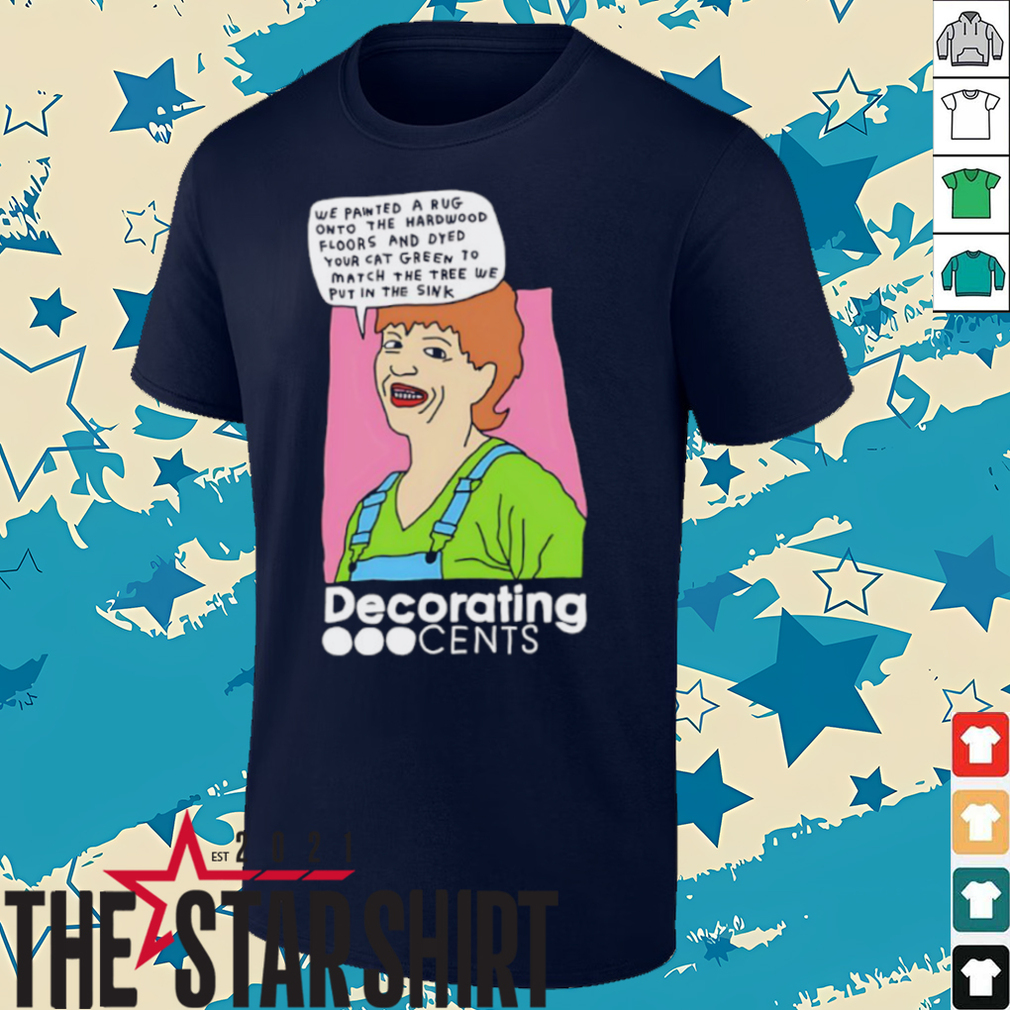“Decorating Cents: We Painted a Rug Onto the Hardwood Floors and Dyed Your Cat Green” – Unpacking the Viral Sensation
The phrase “Decorating Cents: We Painted a Rug Onto the Hardwood Floors and Dyed Your Cat Green” has become an internet phenomenon, sparking a mix of confusion, amusement, and a healthy dose of disbelief. But what exactly is behind this wild statement, and why has it captured the imagination of so many? This isn’t just a random string of words; it’s a commentary on a specific brand of DIY absurdity that’s both cringe-worthy and captivating.
At its core, this phrase parodies the often outlandish and sometimes questionable “hacks” or “transformations” seen in certain corners of the home decorating world, especially those promising budget-friendly solutions that can go hilariously wrong. Think of the viral videos showcasing DIY projects that save money but result in bizarre, unexpected outcomes. The “painted rug onto the hardwood floors” element speaks to a desire for aesthetic without the investment, often leading to a less-than-ideal finish. It’s a shortcut that usually announces itself as a shortcut. For instance, while painting a rug directly onto hardwood might seem like a clever way to avoid buying an actual rug, the reality can be a permanent, potentially tacky, and difficult-to-reverse mistake that devalues your home. It’s a bold move, but rarely a beautiful one.

And then there’s the truly shocking, almost unbelievable twist: “and dyed your cat green.” This takes the DIY folly from a questionable design choice to an act of extreme, and frankly, irresponsible, eccentricity. It pushes the narrative into the realm of the absurd, highlighting how some attempts at “creativity” can cross lines that should never be approached. While the cat-dyeing part is likely hyperbole, it serves as a powerful, albeit humorous, warning against taking DIY shortcuts to their absolute extreme. It underscores the bizarre and often reckless advice that can be found online. This combination of questionable home décor and animal antics creates a memorable, albeit unsettling, mental image that’s perfect for viral sharing. It leaves you thinking, “Did someone actually do this?” and that’s precisely its power.
If you like this kind of whimsical and slightly shocking humor, you might also be interested in the Florida Gators Chomp Chomp Chomp 1853 Shirt, which carries a similar playful and specific niche appeal.
—
The Psychology Behind Viral DIY Fails and Extreme “Hacks”
Why do these types of outrageous DIY scenarios, encapsulated by the “painted rug” and “dyed cat” imagery, go viral? It’s more than just rubbernecking; there’s a fascinating psychological element at play. We’re drawn to extreme examples, especially when they involve common activities like home decorating. The shock value is undeniable, but it also taps into a shared human experience of encountering questionable advice or witnessing ill-advised shortcuts.

Part of the allure is the schadenfreude – finding humor in someone else’s misfortune or bad judgment, even if it’s hypothetical. We often see elements of our own past DIY disasters or those of friends in these exaggerated scenarios, making them relatable on a deeper level. Moreover, these extreme examples serve as cautionary tales. They highlight the fine line between innovation and utter folly. The “Decorating Cents” part of the phrase, implying budget-friendliness, further enhances this. It suggests a desperate attempt to save money that goes spectacularly awry. We’ve all been tempted by a cheap fix, and this phrase reminds us of the potential pitfalls. It taps into our collective experience of navigating the often-treacherous world of online “life hacks,” where some advice is genuinely brilliant, and some is, well, just plain wild.
—
The Deeper Commentary: Consumerism, Authenticity, and Pet Welfare
Beyond the surface-level humor, the phrase “Decorating Cents: We Painted a Rug Onto the Hardwood Floors and Dyed Your Cat Green” offers a subtle, yet potent, commentary on several societal themes. It touches upon consumer culture, the pursuit of authenticity in home aesthetics, and, inadvertently, the serious topic of pet welfare.

The “painted rug” aspect subtly critiques the pressure to achieve certain home aesthetics on a shoestring budget, often leading to compromises that detract from genuine quality and style. It questions the idea of “faking it ’til you make it” when it comes to permanent home alterations. In a world saturated with picture-perfect home décor on social media, the painted rug symbolizes a stark, often regrettable, reality check. It highlights the disconnect between aspirational design and practical, affordable solutions. As one interior design blogger, Anya Sharma, noted in a recent podcast, “True home style comes from thoughtful choices, not just quick fixes. A painted rug might save you fifty bucks, but it could cost you thousands in diminished home value or future headaches.”
And the “dyed your cat green” portion, while hyperbolic, raises a crucial ethical point about pet ownership. It’s a jarring reminder that animals are not accessories or props for human amusement or aesthetic whims. While played for laughs, it subtly advocates for responsible pet care and challenges the idea of treating animals as objects. The sheer absurdity of the statement is what makes it so impactful, forcing a chuckle but also prompting a moment of reflection on the boundaries of what’s acceptable in human-animal interactions. This uncomfortable yet memorable image is what makes the phrase stick with you.
—
From Viral Phrase to Personal Statement: The “Decorating Cents” Shirt
The transition of this viral phrase onto a shirt transforms it from a fleeting internet moment into a wearable statement. People who choose to wear the “Decorating Cents: We Painted a Rug Onto the Hardwood Floors and Dyed Your Cat Green” shirt are not just showcasing a funny meme; they’re aligning themselves with a particular brand of humor and a subtle critique of DIY culture.

Wearing this shirt signifies a knowing wink to those who get the joke. It’s an inside baseball reference for anyone who has scrolled through endless DIY videos, endured a bad home renovation story, or perhaps even attempted a questionable “hack” themselves. It’s a conversation starter, inviting others to share their own home improvement nightmares or laugh at the sheer absurdity of the concept. It allows the wearer to embody the irony and humor of the statement, becoming a walking testament to the wild side of decorating and the unpredictable nature of internet trends. This shirt isn’t just about a phrase; it’s about sharing a laugh and connecting over the universal experience of home projects gone wrong, or at least, almost wrong.


























